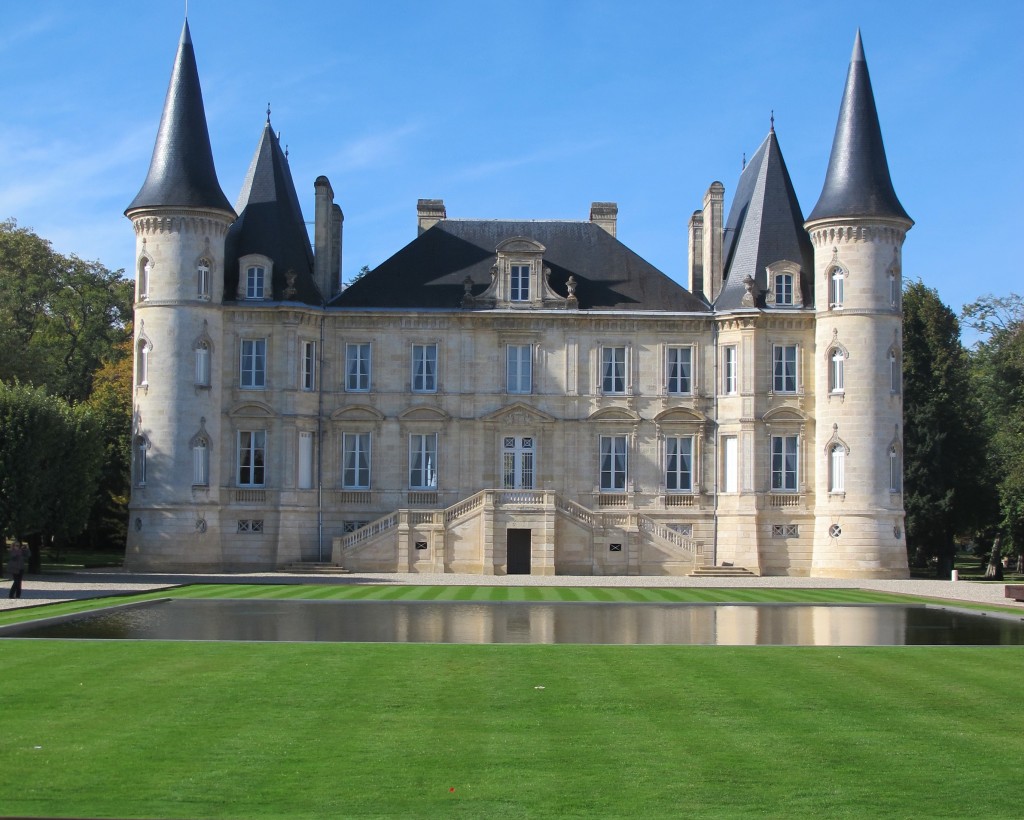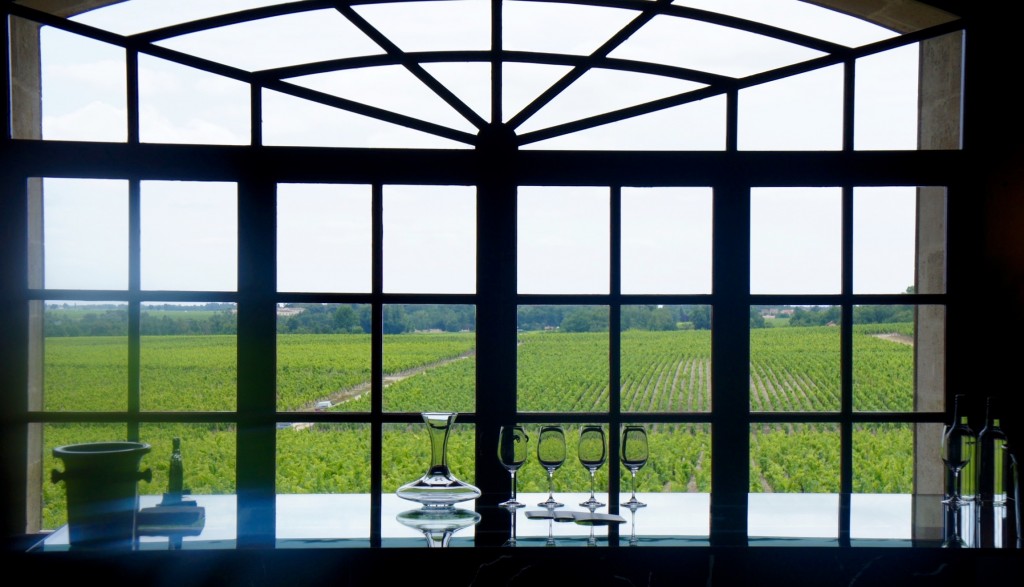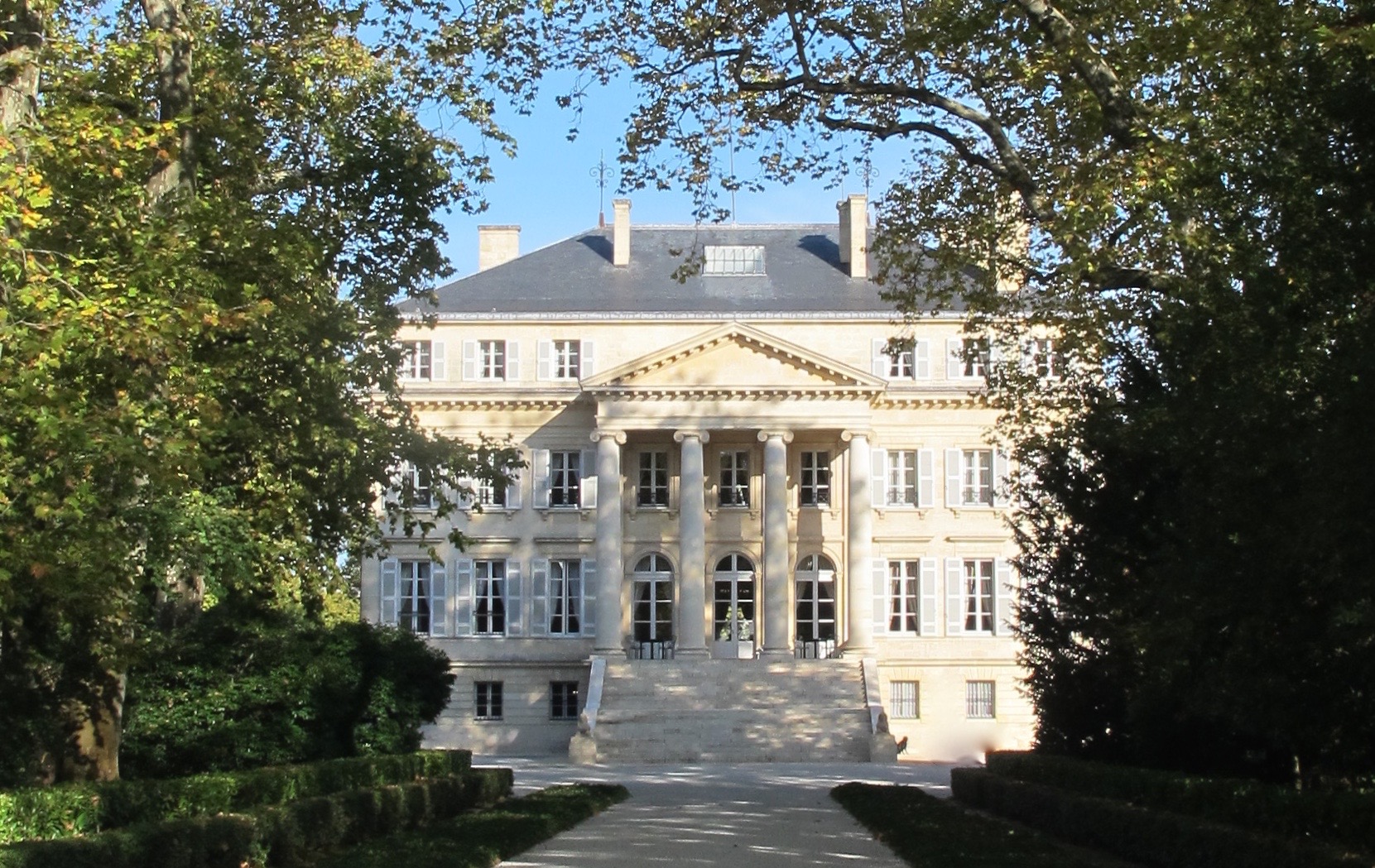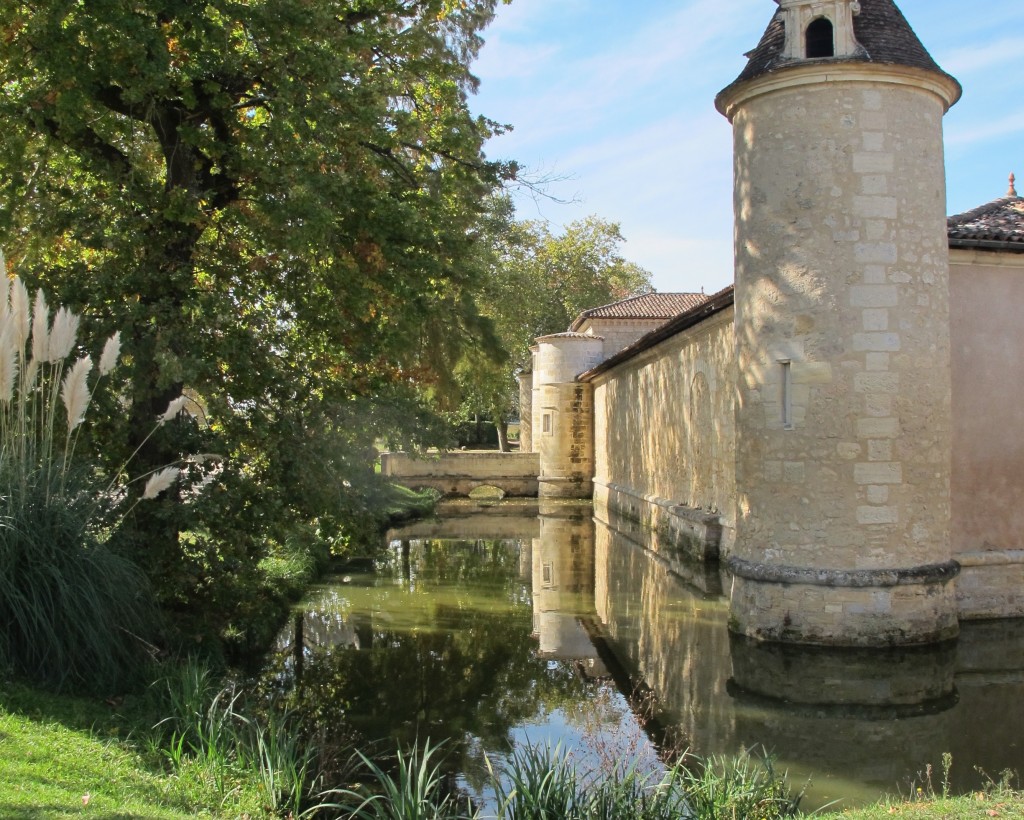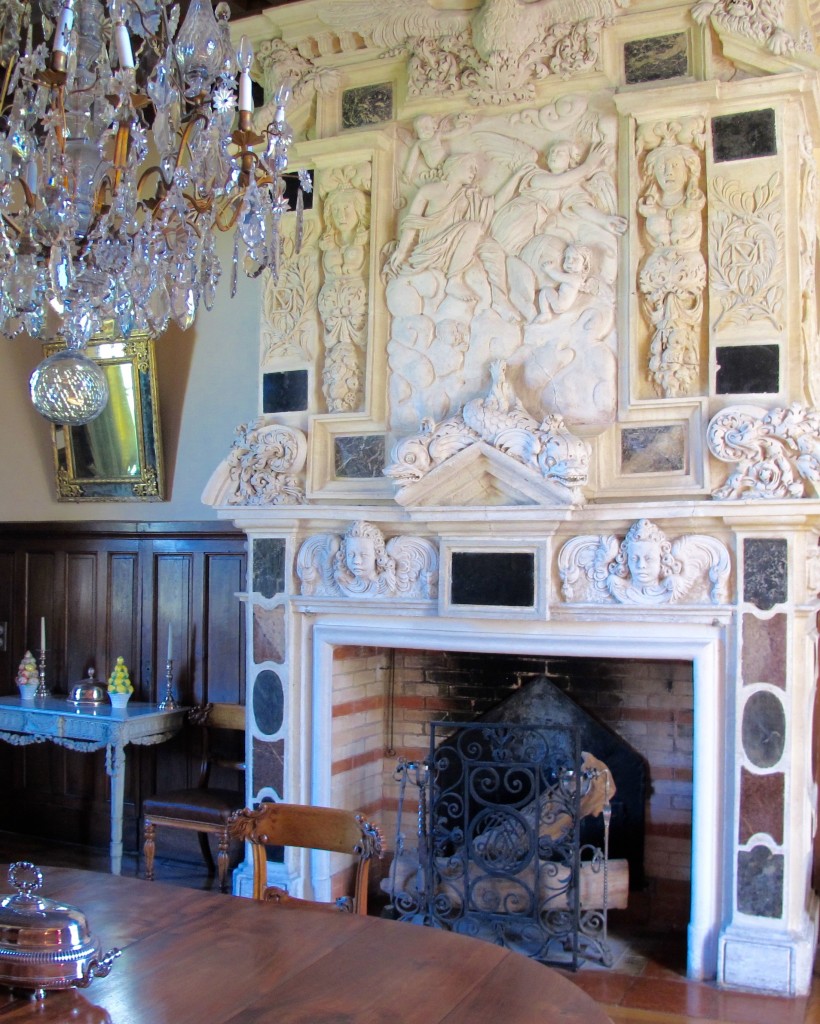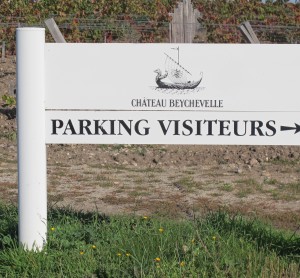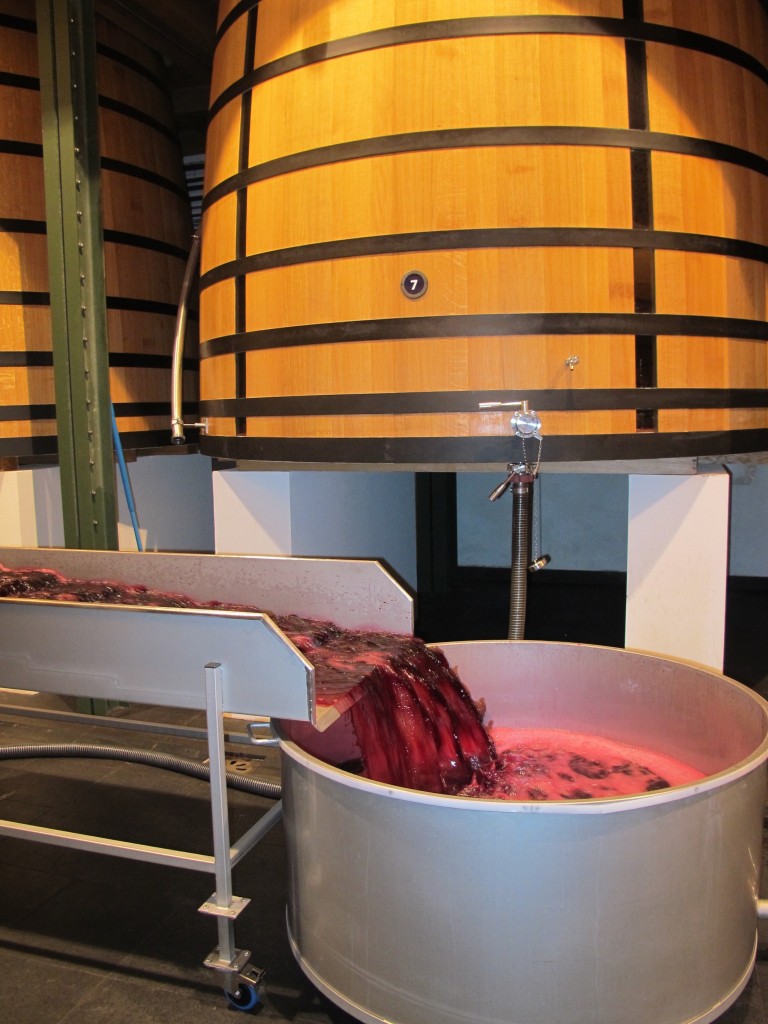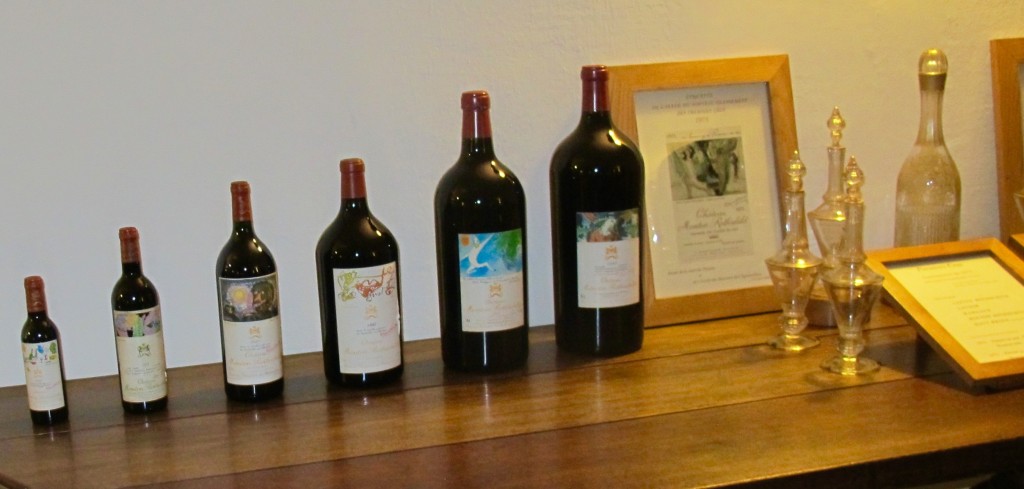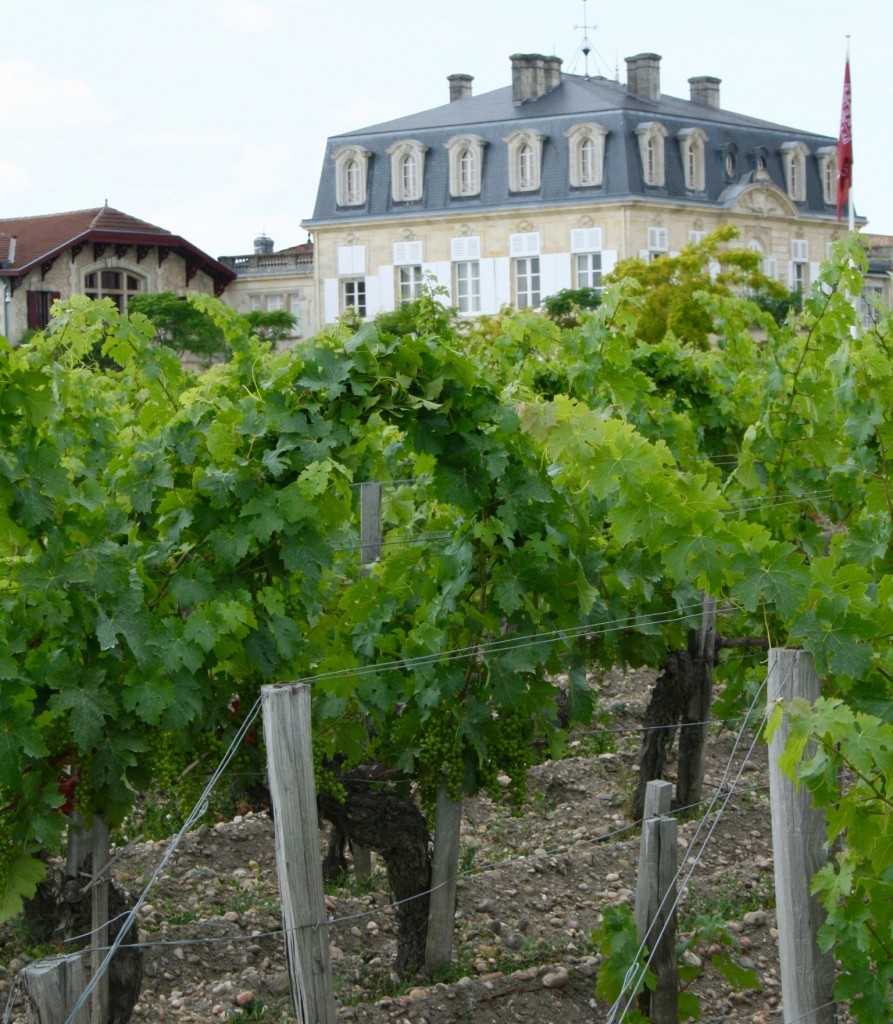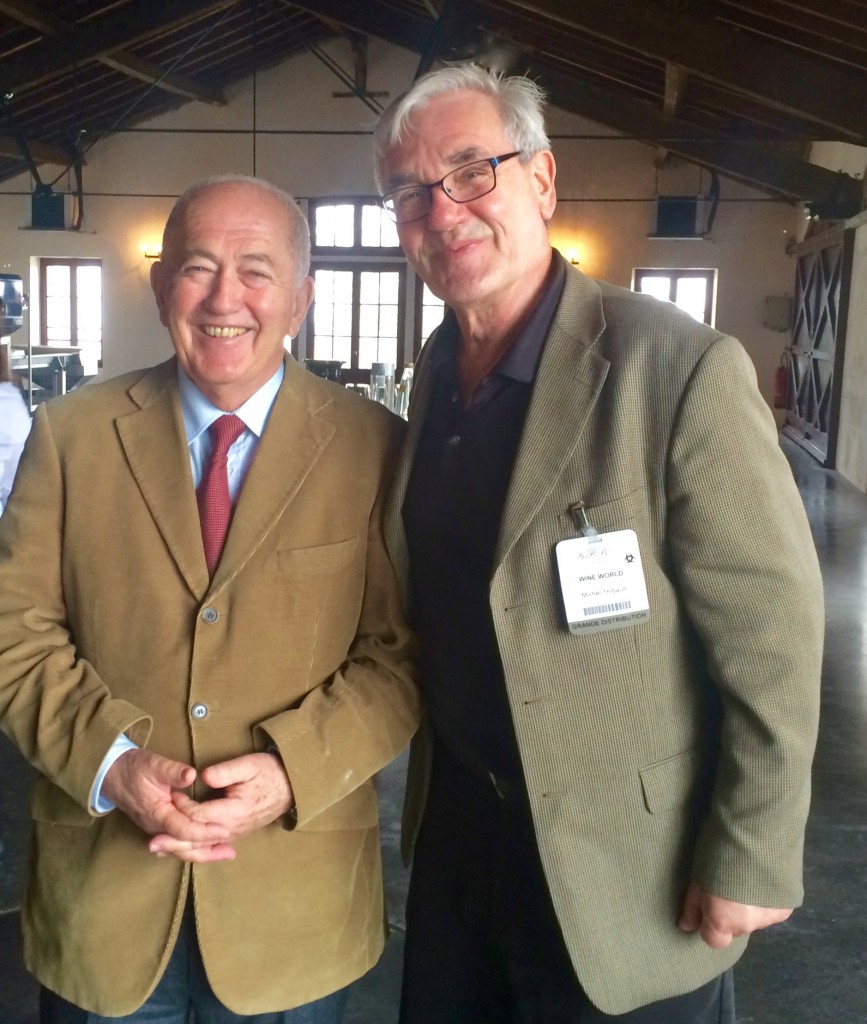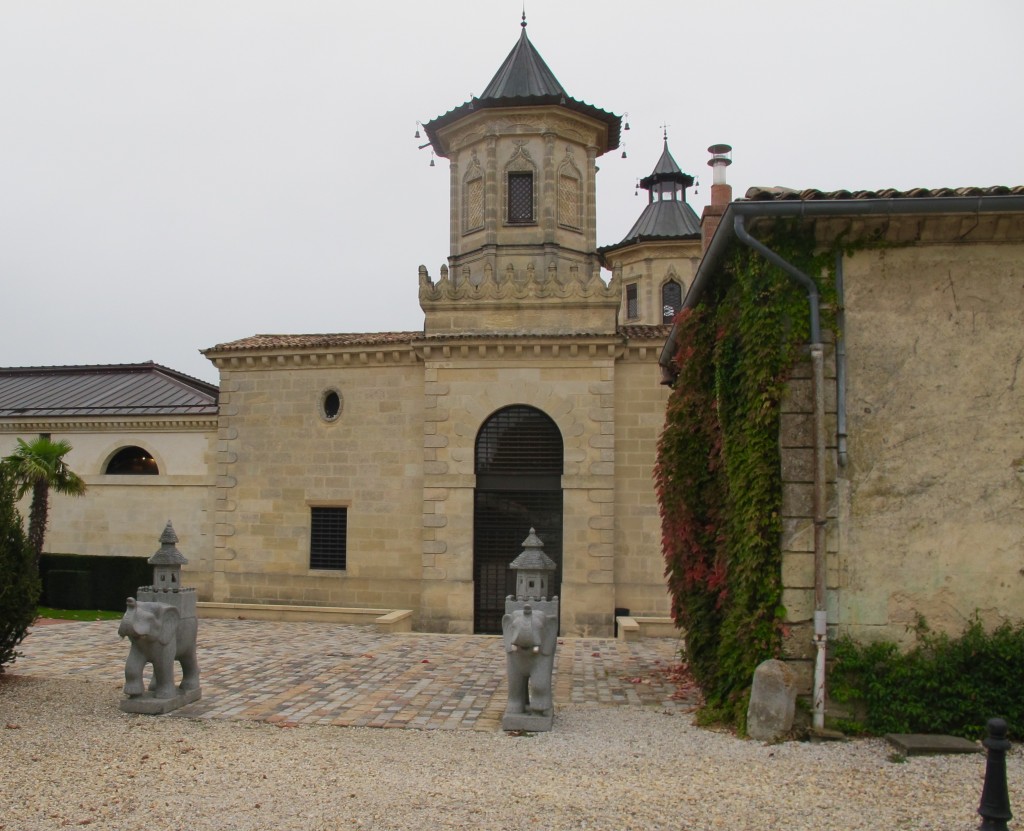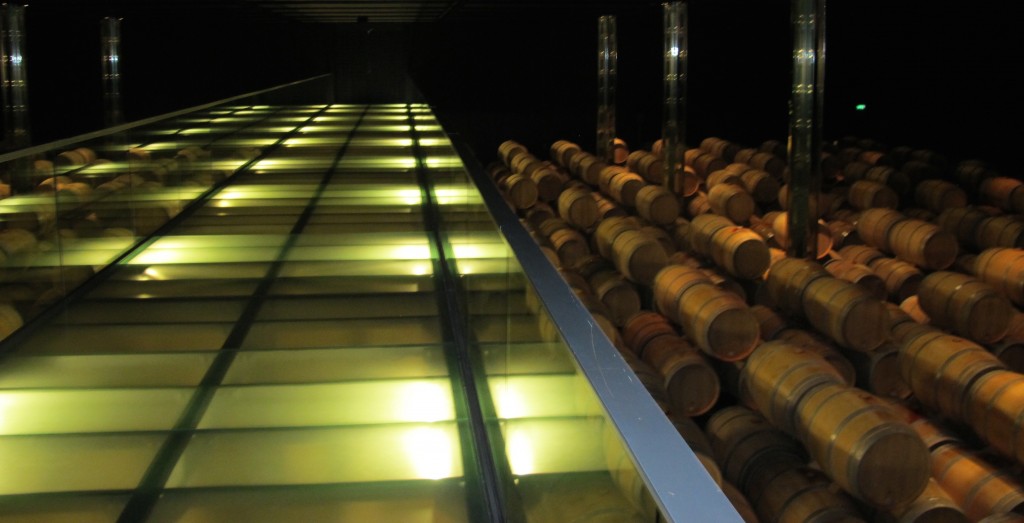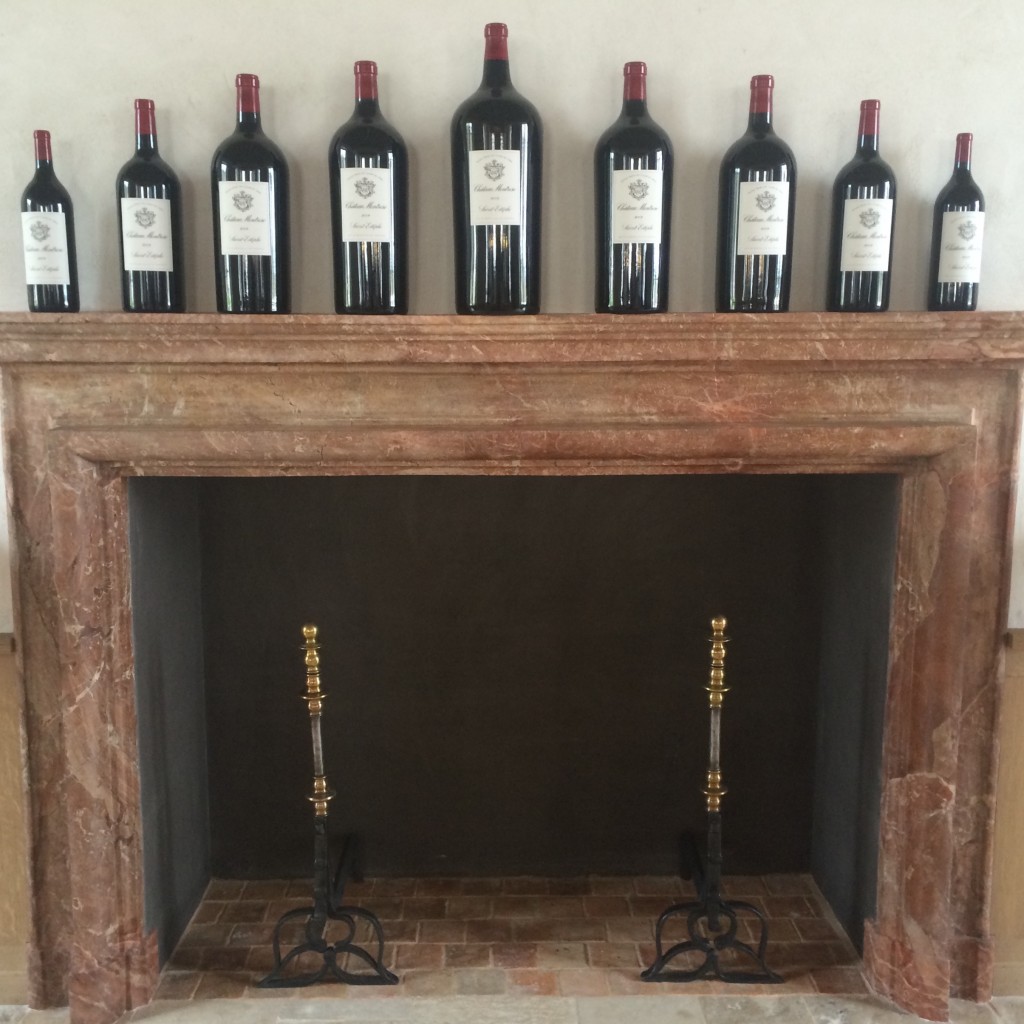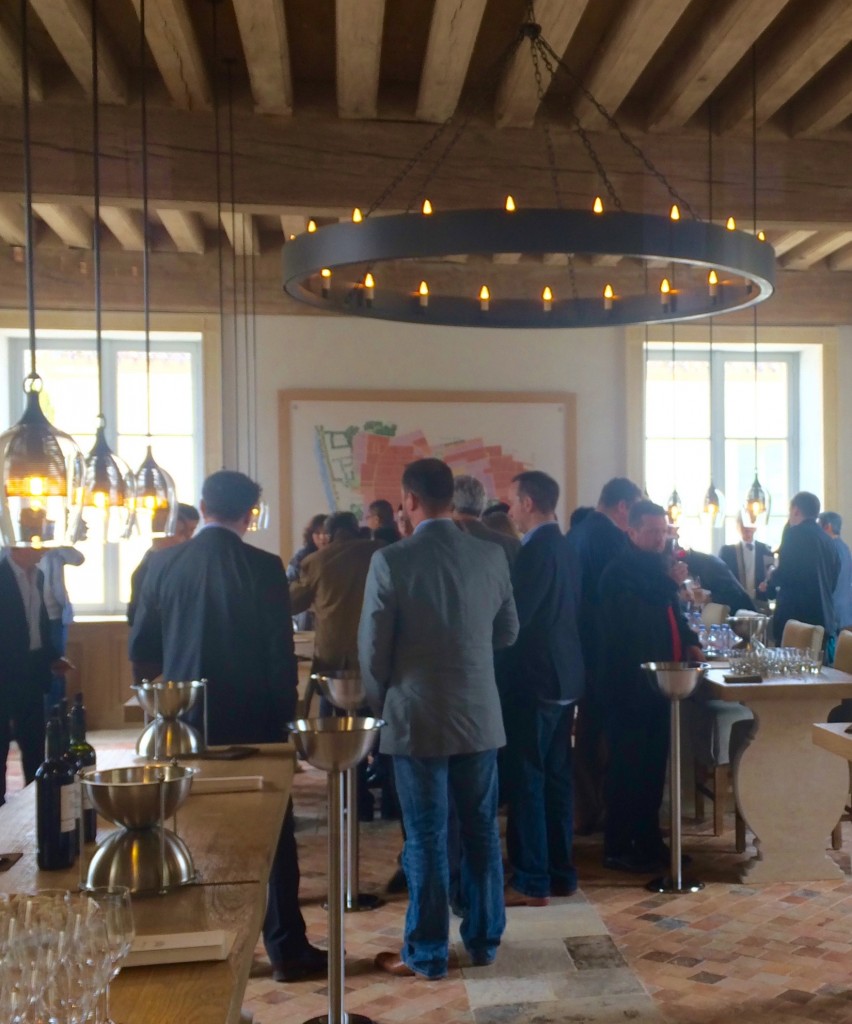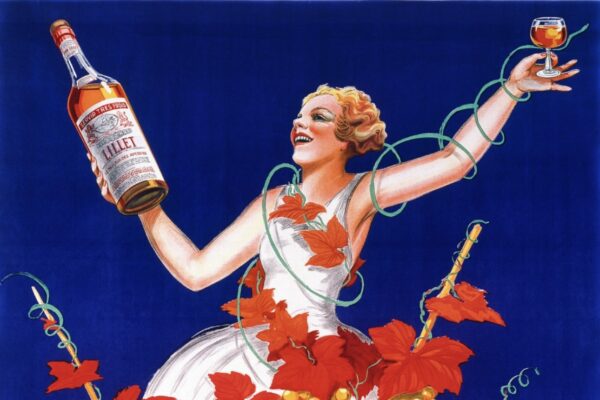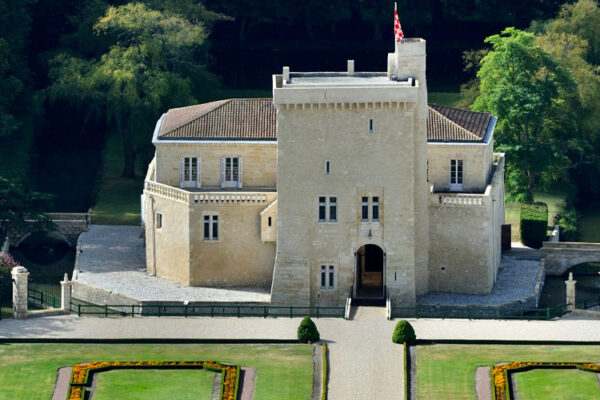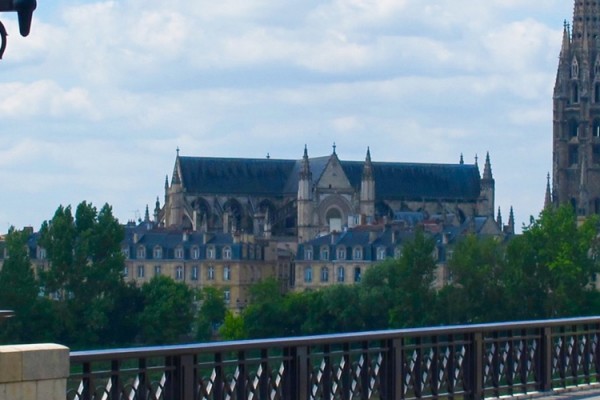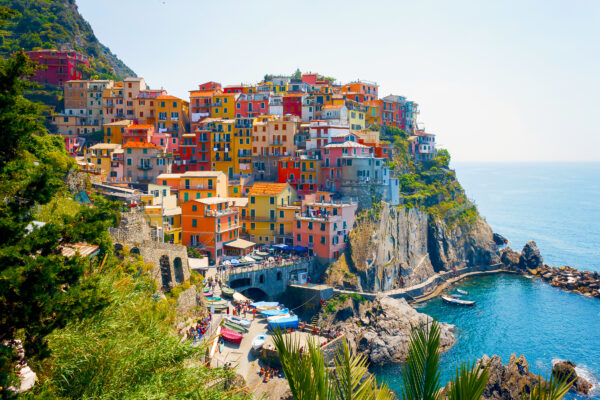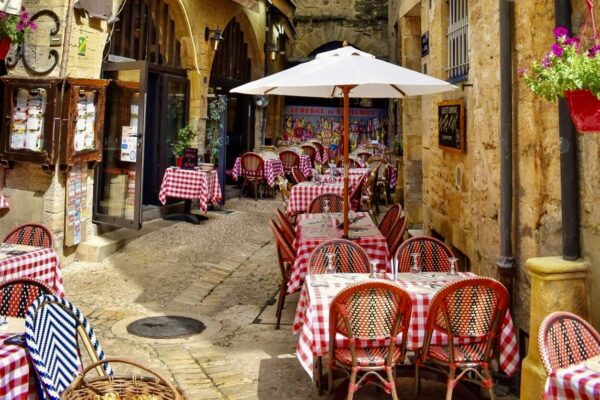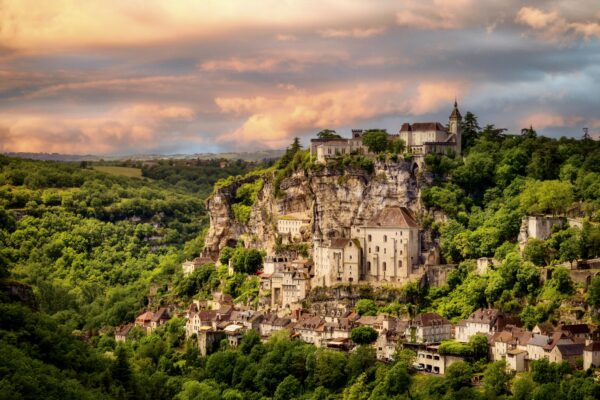The Left Bank’s Châteaux Road
by Michel Thibault, of Michel Thibault Wine
The Left Bank of Bordeaux is, for many good reasons, considered one of the temples of wine. It boasts of four of the five Premiers Grands Crus Classes (Châteaux Mouton Rothschild, Latour, Lafite Rothschild and Margaux). The fifth one, Haut Brion, is located in Pessac, southeast of Bordeaux. It’s also the home of dozens of classified wines, whether second, third, fourth or fifth growths. Everything there breathes wine: Châteaux dot the landscape, tourist buses make their daily runs and local restaurants proudly display their selections. Villages with names like Saint-Julien or Margaux evoke the fine art and marketing that the wine business has brought about.
The Médoc offers an incredible variety of landscapes and emotions. To start, when you leave Bordeaux, all you see are local neighborhoods and rows of warehouses. After driving through two dozen roundabouts, you start asking yourself: Did I come to the right place? Is this the area that so many people drool over? Be patient and you will be rewarded. Opt for the Gironde river road on your way to the Châteaux and then return to Bordeaux via the larger road in the afternoon, it will save you lots of time and headaches.
HAUT MÉDOC
At first, you drive through marshy areas that were not drained during the late 1700s (while most of the Médoc was actually drained), but then you arrive at the Haut Médoc and the two interesting properties of Château Cantemerle on your left and La Lagune to the right. Both were included in the 1855 classification of Left Bank wines, two of only five Haut Médoc wines to do so.
Château La Lagune: Led by oenologist Caroline Frey, whose family purchased the property in 200, this estate has of late undertaken massive improvements and quality has ensued. 2009 and 2010 vintages have placed it atop of the pile with the very best. The estate’s mild micro climate, the soil’s “ galets” (pebblestones) retaining heat and providing excellent drainage, the Freys aim to make a slightly more concentrated wine and the fairly unique blend of 10 percent Petit Verdot , added to approximately 60% Cabernet Sauvignon and 30% Merlot, are all elements making this Haut Médoc property an influential one. Caroline, working with the Jaboulet estate in the Rhône valley, has even started a new project combining wines from la Lagune and the Rhône. It is called “ Evidence par Caroline” and is a throwback to the late 1700 days when Châteaux such as Lafite Rothschild would add a little Rhône Syrah to their blend! (Visits are by appointment only, contact k.joffre@chateau-lalagune.com)
Château Cantemerle: This sizeable property, is planted with vines both near La Lagune and on the slopes of the village of Macau. About 50% Cabernet Sauvignon and 40% Merlot with the balance in Petit Verdot (5%) and Cabernet Franc (5%) complete the makeup of this wine, the very last one included in the classification of 1855 as a fifth growth. At one time, after phylloxera hit the left bank in a dire way, Cantemerle wine was selling at a higher price than Lafite Rothschild! The property fell into ruin until it was picked up by an insurance company in 1981. Much investment towards rebuilding the vat room and cellar have been spent and judging from recent performances since 2005, the wine ‘s quality is back up, making it one of the better values in all of the left bank. (Visits are by appointment only, contact cantemerle@cantemerle.com)
MARGAUX
Leave the Haut Médoc behind, and you come to the first tiny villages of Margaux such as Labarde, Cantenac, Issan, Arsac and of course, Margaux. Quaint villages, narrow streets and signs touting properties let you know you are finally in wine country. The first “ coup de coeur” (heart-stopping experience) is Château Palmer – an imposing blend of classic, baroque and renaissance styles. Its wines are elegance personified. If you can’t wait for the grand wine to mature, try their Alter Ego, the second wine whose blend includes more Merlot and is easier to drink sooner. (Visits at Palmer are by appointment only from Monday to Friday. Inquire at Château Palmer)
Château Margaux, is a first growth from the 1855 classification, owned by the Greek family Mentzelopoulos. The Château just went through extensive improvement with a new wine cellar and an underground library. I recently tasted a 2004 vintage there, early in the morning, and my day had a great start. Margaux offers the grand wine but also an excellent second wine, Pavillon Rouge and a third and a fourth wine! This allows for rigourous selection and very high quality in the first two wines. (Visits are by appointment only Monday-Friday and tastings are for professionals only. Contact Château Margaux directly.)
The prettiest property though, in my opinion, is Château d’Issan. Hidden behind a long stone wall, the Château, whose wine was served in 1152 at the wedding of Eleanor of Aquitaine and Henry II, features a real moat and is one of the few properties that will remind you of the days of Ivanhoe. Under the helm of the Cruse family, the wine has recently been making huge leaps forward. Issan is actually grown in biodynamic fashion although not certified yet. (Visits to Château d’Issan are by appointment only.)
Margaux is particular since its soil is very thin, with a high gravel content, allowing for great drainage. As a result, the wines are generally soft, elegant and well rounded. This feature of the terroir usually makes them the most approachable wines in the entire Médoc region. Conversely, during tough vintages, the wines often seem a little thin.
In Margaux, stop for lunch at Le Lion d’Or (located in the hamlet of Arcins), where local winemakers have a cabinet with some of their wines available when they are lunching. Make a reservation beforehand though, they are always busy. See more about this restaurant and other recommendations see FOOD QUEST in this issue.
SAINT-JULIEN
As you push further away from Bordeaux past Moulis and Listrac, you arrive in Saint-Julien. Château Ducru Beaucaillou is the first notable property, known for its large, beautiful rocks giving extra minerality to the wine. The majestic Château is owned by the Borie family. The cellars are under the house, providing the owners with constant beautiful wine aromas! The 2009 vintage, a blend of 85% Cabernet Sauvignon and 15% Merlot was given a 100 pts rating by Robert Parker and is often hailed as the best wine of that vintage. (Visits for professionals only Château Ducru Beaucaillou.)
Another landmark in Saint-Julien is Château Beychevelle. Located slightly uphill, next to Ducru Beaucaillou, and in a bend of the road, Beychevelle is mostly noted these days by the interest it garners from Asian customers. The estate is owned by the Castel group with large investments in China and its label features a boat reminiscent of the Chinese dragon boats. Talk about lucky marketing! (Visits by appointments, contact: mdv@beychevelle.com)
As you would imagine, the wineries located on the south side of the appellation, near Margaux, offer soft, round notes while wineries closer to Pauillac (next appellation northward) are more tannic. Best wines there are Châteaux Léoville Barton and Léoville-Poyferré and one of my very favorites, Château Léoville Lascases, with vineyards throning over the river, next to Château Latour. Its wines are usually complex and polished, benefiting from the proximity to the river and its alluvium. The best view in all of the Médoc is, to me, the vast expanse of Chateau Léoville Lascases vineyards overlooking the Gironde, right before the Pauillac village sign. (Professionals visits only at: contact@leoville-las-cases.com)
A very pleasant restaurant in Saint-Julien is le Saint Julien, located right across the street from Château Léoville-Poyferré. When mushrooms are in season, don’t miss it! (reservations: +33-5-56-59-63-87)
PAUILLAC: PART ONE
Next on your Left Bank foray is Pauillac. The very first sight will be the tiny gate of Château Latour and its iconic tower, located on the river side. Latour is almost impossible to visit, even for professionals and in recent years, they have even pulled out from offering their wines “ en primeurs”. The wines are now being released by the winery as it deems they are ready. Latour is owned by Francois Pinault, who also owns a professional soccer team, lifestyle and luxury goods brands. Everything about Latour spells quality. Of all the first growth wines, Château Latour has always been the most collectible.
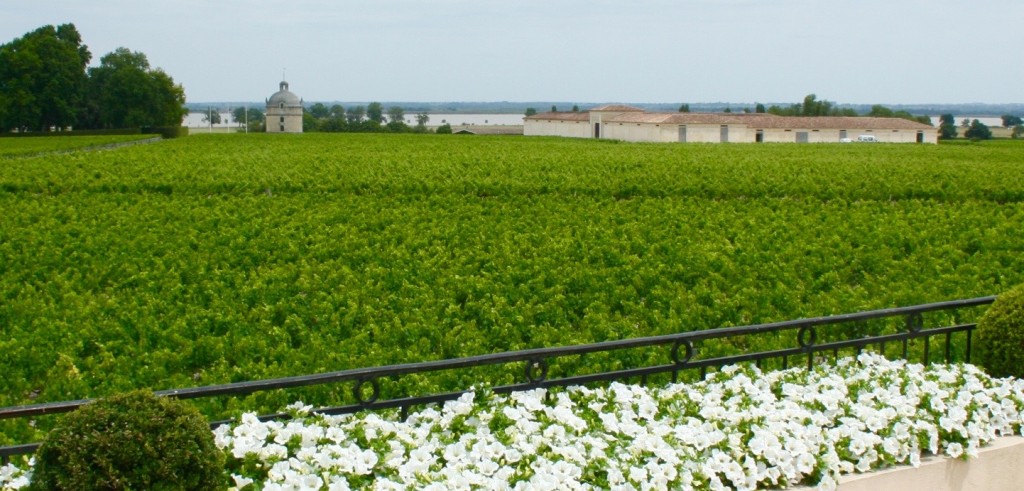
View of of the renown tower of Château Latour from Château Pichon Longueville. Photo by Michel Thibault.
Rising majestically across the street from Latour, is Château Pichon Longueville. You have to stop and take a picture, as the property is just breathtaking! The estate reminds you of the very ornate Loire Châteaux. Pichon Longueville, like his neighbor Pichon Lalande, is a classified second growth, but most would rate it a “super second “ ( like Ducru Beaucaillou, Montrose, Cos d’Estournel) as its wines often rival the first growths in overall quality. (Pichon Longueville is open year round for visits, contact@pichonbaron.com)
Before arriving in the town of Pauillac, you’ll notice the hillside vineyards of Château Lynch-Bages. A favorite of wine collectors, the property was originally owned by an Irishman, although the estate now belongs to famous Bordelais Jean Michel Cazes. Their second wine, Echo de Lynch Bages is an excellent buy for the money. The estate is known for including only about 15% Merlot in the blend, making their wines somewhat more masculine. (To visit Lynch-Bages, go to Jmcazes.com and fill up the questionnaire.)
Push a little further out of town to see the famous Château Mouton Rothschild, an iconic property. Its land is located on a hillside (called mouton in French – possibly the origin of the Château name). The Rothschild family purchased the property in 1853, but it was in 1922 when Baron Philippe took over, that Mouton took a different dimension. First, instead of letting negociants (Bordeaux brokers) handle all aspects of the wine blending, distribution and marketing, the Baron decided to bottle his wine at the Estate. Secondly, he opted to give its label his personal touch. A few years later, the famous “Mouton labels” were born and ever since, a famous artist has created for every vintage a painting or drawing. Those paintings link Mouton to current events or memories, or simply highlight the beauty and quality of the estate. Artists such as Miró, Chagall, Braque, Dalí, Francis Bacon and Koons to name a few, all lent their talent to create these labels.
Of course, one of the most famous is the 1973 label, which was not only painted by Picasso, but which marked Mouton Rothschild’s ascent into first growth status. Immortalized are the Baron’s words: Second je fus (Second I was called), Premier je suis ( first I am), Mouton ne change (Mouton never changed) / meaning that Mouton was always first growth quality and it took such a long time for others to figure it out…
The property is not only beautiful but also state of the art, with a brand new Chai (vat room) and an optical sorting machine and gives you a very different feel from its neighbor, Château Pontet Canet. (To visit Mouton, go to Chateau-Mouton-Rothschild and fill out the online application.)
PAUILLAC: PART TWO
I love Château Pontet Canet! Alfred Tesseron, the owner, reminds you of a real farmer, close to his land. In 2005, Mr Tesseron took a huge chance in trying to go the biodynamic way (the natural way to grow wine according to Steiner’s principles of giving back to the earth what you take from it). Certification takes three years, but unfortunately in 2007, the growing season was terrible and Tesseron had to abandon the program. Undetered, the following year he started again and finally in 2010, the winery was certified biodynamic.
While many do not adhere to these principles, the results are there to prove that he is doing something right: 2009 and 2010 vintages both earned a 100 points rating. When I asked Mr. Tesseron about these results, he replied: “Even if I didn’t believe in biodynamics, the fact that the process makes me and my workers spend 12 hours a day in the vineyard versus half that amount of time before, has to create a better wine, as I see the vine and fruit every second of its growth.” At Pontet Canet, horses do a good bit of the labor, vines grow the amount of fruit they can sustain, and if Mr Tesseron is not there, he is likey to be making his now world famous Cognac. (Visit Pontet Canet through appointment at Château Pontet Canet.)
Of course, there is a lot more to Pauillac wines than these two wineries. As I mentioned previously, Latour is possibly the most sought after wine in the world, along with Pétrus and Romanée-Conti. Pichon Longueville (also called Pichon Baron) and Pichon Lalande are also examples of the best wines produced in this exceptional terroir: elegant, rich, full-bodied, tannic with expressions of lead pencil, cigar box, spice and earthy, woodsy aromas. These wines can have enormous longevity and it is not rare to be able to enjoy a 40-50 year old or even older wine.
Château Lafite Rothschild is bigger than life, a beautiful property at the edge of the appellation joining with St Estephe: another side of the Rothschild family owns it, its circular cellar is glorious and its wines have experienced a meteoric rise in price in the past decade with Asian interest. Even its second wine, Carruades is almost impossible to find. (To visit Lafite Rochschild, contact visites@lafite.com.)
SAINT-ESTÉPHE
The final part of our journey takes us just past Château Lafite Rothschild, right across the hill to Saint-Estèphe. These wines were produced earlier than in many other Médoc properties. In fact they were popular before the 1770s! This part of the Left Bank is dominated by two estates: Cos d’Estournel and Montrose.
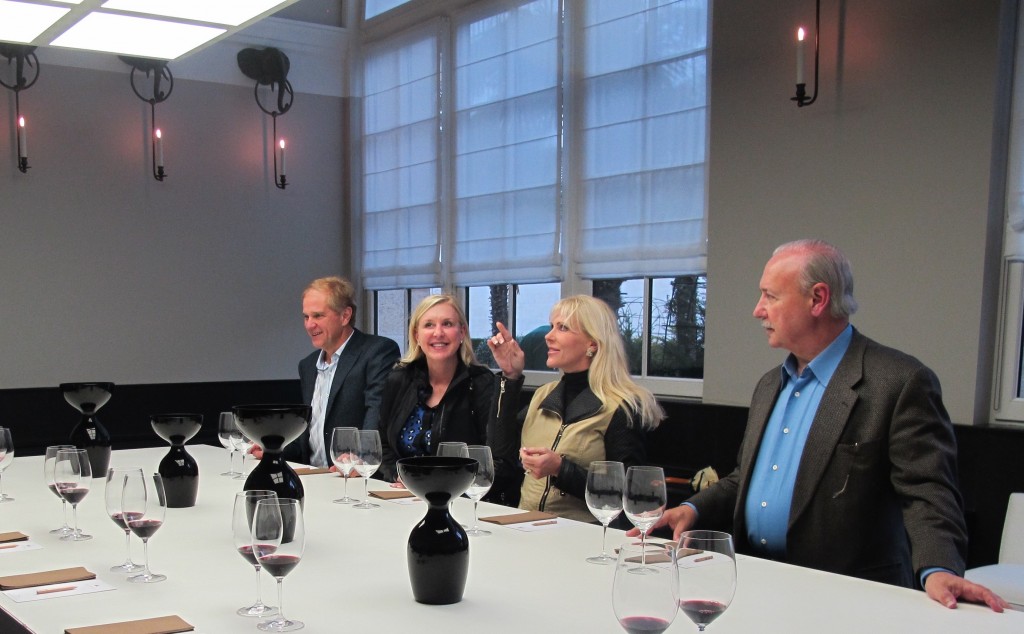
Phil and Deena Cossich along with Dana and Glenn Armentor sample wines at Cos d’Estournel, on a visit made possible by the Destin Charity Wine Auction Foundation.
Château Cos d’Estournel is just stunning. The property was once owned by Louis Gaspard d’Estournel, who through his love for India, erected pagodas on top of his castle. The word Cos means “hill of pebbles” and these pebbles rest on a bed of limestone giving Cos a very unique flavor profile. The cellar is grandiose: beautiful conical-shaped stainless steel vats are visible on the top floor, but as you go downstairs, a smoky green glass passerelle (suspended bridge) leads you over the hundreds of wood barrels, all the way to the reserve room boasting of vintages dating back to the mid 1800’s. Absolutely stunning sight! Since Michel Reybier took over in 2000, Cos d’Estournel has often rivaled the First Growths for quality with its big, bold and concentrated wines. (To visit Cos d’Estournel, contact visite@estournel.com.)
Château Montrose, owned by the powerful Bouygues family (Bouygues Telecom) is another splendid winery and the site of extensive renovations with the environment as a primary concern. The soil on the property has the particularity of very large stones (coming from the Massif central mountains). These stones allow for good heat retention and excellent drainage. Wines at Montrose are powerful, very masculine and emit a sort of barnyard feel, reminiscent of some Burgundies. Ratings for these wines are also through the roof and 2009 and 2010 vintages of Montrose are some of the most prized in all of the Médoc. (For more information, see Château Montrose.)
So, in the end, while the Médoc does not offer you the romantic sense that the Right Bank does, with its vertiginous drops and its endless views, there is the Gironde – a truly magnificent river. You can easily see that the river is the source of all life there. It makes for a pleasing landscape and it has for millennia provided food for these vineyards. This relationship is what has made the Left Bank what it is today: the home of many of the world’s greatest wines.
Click on the red links for more information about the properties and restaurants mentioned in this article.


